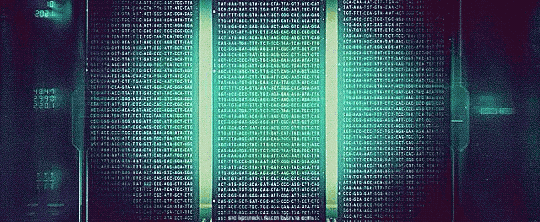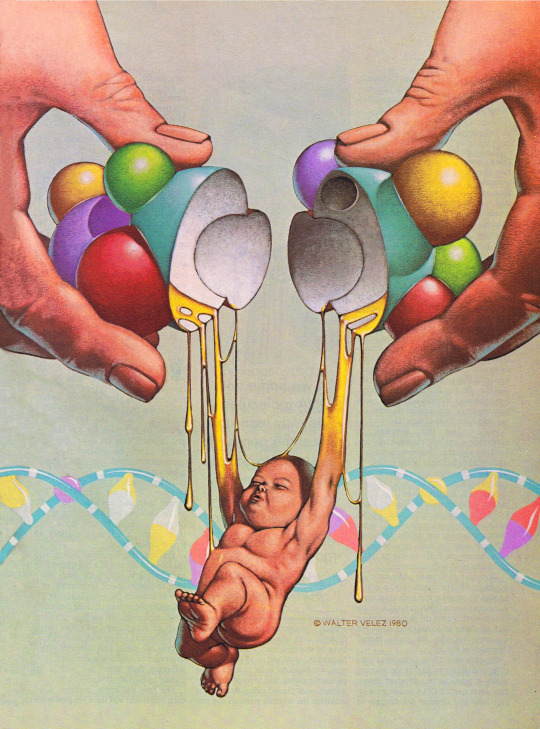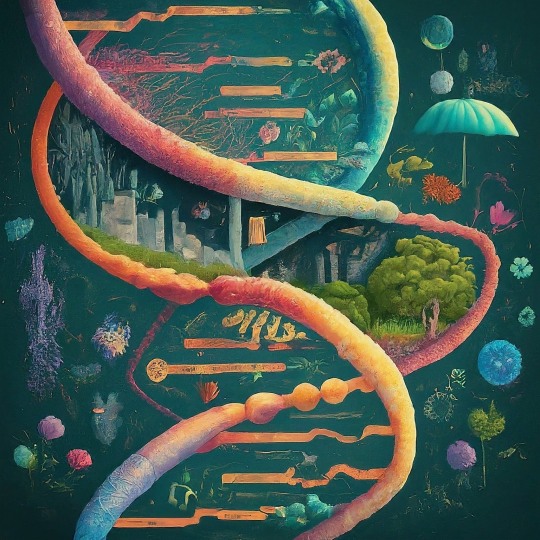#Genetic DNA
Text
Genetic Fitness Testing in India: Tailoring Your Health Journey for Optimal Results

In today's health-conscious world, personalization is the key to achieving fitness goals. A growing trend, Genetic Fitness Testing in India, offers a scientific approach to understanding how your genes influence your fitness, health, and overall well-being. By delving deep into your DNA, this testing provides a detailed map of your body's unique strengths, weaknesses, and potential, enabling you to craft a tailored fitness regimen for optimal results.
What is Genetic Fitness Testing?
Genetic fitness testing, also known as DNA fitness testing, is a method that analyzes specific genetic markers related to fitness, metabolism, muscle performance, endurance, and recovery. These tests can reveal insights into how your body responds to exercise, your risk for injuries, your ability to burn fat, and even your nutritional needs.
Genetic Fitness Testing in India is gaining traction as more individuals and fitness enthusiasts seek to understand their bodies at a deeper level. This test goes beyond the traditional one-size-fits-all approach, offering personalized data that can help you optimize your workout routines, improve recovery times, and enhance overall fitness outcomes.
The Science Behind Genetic Fitness Testing
Genetic fitness tests analyze DNA samples, typically collected via a simple saliva swab. The sample is then sent to a lab where advanced technology is used to identify genetic variants that affect your body's response to physical activity and nutrition.
Several factors can be measured through Genetic Fitness Testing in India, including:
- Muscle Fiber Composition: Genetic tests can reveal whether your body is more suited for endurance or strength-based activities. Understanding this helps tailor workouts to suit your natural strengths.
- VO2 Max Potential: This refers to your body’s ability to transport and utilize oxygen during exercise. Knowing your VO2 max potential helps in designing an appropriate cardiovascular training plan.
- Injury Risk: Your genetic makeup can predispose you to certain types of injuries. A genetic fitness test can identify these risks, helping you take preventive measures.
- Recovery Time: Genes also play a role in how quickly your muscles recover after a workout. Personalising your rest and recovery times can prevent burnout and injury.
- Nutrient Absorption: The way your body absorbs and utilizes nutrients can be affected by your genes. Understanding this helps in creating a more efficient diet plan that complements your fitness journey.
Why is Genetic Fitness Testing Gaining Popularity in India?
India is witnessing a fitness revolution, with more people seeking healthier lifestyles, customized workouts, and personalized nutrition plans. Genetic Fitness Testing in India offers a way to streamline this process, allowing fitness enthusiasts to make data-driven decisions about their health.
Several factors are contributing to the rising popularity of genetic fitness testing in India:
1. Increased Awareness of Personalized Health: More Indians are now aware of the importance of personalized health and fitness solutions. As a result, there is a shift towards methods like genetic fitness testing, which offers insights tailored to each individual’s unique genetic blueprint.
2. Technological Advancements: With advancements in technology and more accessible genetic testing services, individuals across India can now take advantage of these services without breaking the bank.
3. Integration with Fitness Programs: Many fitness coaches and health experts in India are incorporating genetic fitness testing into their programs. This integration ensures that clients are not just following generalized fitness regimes but are instead working on plans designed specifically for them.
4. Prevention of Injuries and Long-Term Health Issues: With a genetic predisposition to certain injuries, individuals can avoid long-term damage by understanding their risks early on. This is particularly important for professional athletes and fitness enthusiasts who undergo rigorous physical activity.
Benefits of Genetic Fitness Testing in India
1. Personalized Fitness Plan
Genetic fitness testing allows for the creation of a workout plan tailored to your genetic strengths. Whether you're aiming to build muscle, improve endurance, or lose weight, your DNA will give you valuable insights to achieve your goals more effectively.
2. Improved Nutrition
Your genes can influence how your body metabolizes certain nutrients. For example, some people might be genetically predisposed to lactose intolerance or difficulty absorbing vitamins like B12. With Genetic Fitness Testing in India, you can create a diet plan that aligns with your body’s specific nutritional needs.
3. Faster and Safer Results
Because your fitness routine and diet are customized according to your genetic data, you’re likely to see faster results without the risk of injury or burnout. For those aiming to reach peak fitness levels, genetic insights can ensure your efforts yield optimal outcomes.
4. Prevent Overtraining
Genetic testing can reveal how your body responds to stress and recovery. For example, some people may require more rest days between high-intensity workouts. This insight can help you avoid overtraining, which is a common cause of fatigue, injury, and lack of progress.
5. Long-Term Health Benefits
Genetic testing goes beyond fitness—it can reveal genetic markers related to long-term health issues such as heart disease, diabetes, and metabolic conditions. With early knowledge of potential health risks, you can adopt preventive measures and live a healthier lifestyle.
Who Should Consider Genetic Fitness Testing in India?
Genetic Fitness Testing in India is beneficial for various groups:
- Fitness Enthusiasts: Whether you’re just starting your fitness journey or are a seasoned athlete, genetic testing can provide insights that will help you maximize your potential.
- Athletes: Professional athletes and sportspeople can benefit from understanding their body’s response to intense training, thus enhancing their performance while minimizing injury risks.
- Weight Loss Seekers: For individuals struggling to lose weight, genetic testing can reveal how their bodies process food and whether they are more likely to benefit from specific types of diets.
- Health-Conscious Individuals: Even if you’re not actively into fitness, knowing your genetic risks for certain diseases can help you lead a healthier life with preventive measures.
Conclusion: A New Frontier in Personalized Health
As Genetic Fitness Testing in India becomes more accessible, individuals now have the power to understand their bodies like never before. This personalized approach offers the potential for better fitness results, improved nutrition, and long-term health benefits.
By understanding your genetic makeup, you can make informed decisions about your fitness routine and nutrition plan. Whether you're aiming to excel in sports, lose weight, or simply improve your overall health, genetic fitness testing can be the key to unlocking your body’s full potential. In a country as diverse and health-conscious as India, genetic fitness testing is fast becoming a game-changer in the fitness industry, leading individuals toward a healthier and more personalized journey to wellness.
#Genetic Fitness Testing India#DNA Testing Service India#DNA Testing Centres India#DNA Testing Centres#genetic fitness testing#Genetic DNA
0 notes
Text







Blade Runner 2049 (2017)
#blade runner 2049#scifiedit#science fiction#computing#scifi aesthetic#cyberpunk aesthetic#graphic design#glitch#user interface#user interaction#gifs#gifset#dennis villeneuve#genetics#dna#computers#flashing gif#uxdesign#ui ux design#uidesign
503 notes
·
View notes
Text

Ancient DNA analysis reveals dingoes have been in Australia for 1000s of years
The canines are related to dogs and wolves from China, not domestic dogs, new study suggests.
The modern-day dingo is descended from ancient dogs and wolves from China and the Tibetan Plateau and not to dogs domestic to the Australian continent, researchers behind a new study report.
Using 42 ancient DNA samples from dingo bone and teeth remains housed in museums and excavated from caves and other sites, researchers date the arrival of the iconic canines in Australia through Pacific traders to between 3000 and 8000 years ago...
Read more: Ancient DNA analysis reveals dingoes have been in Australia for thousands of years | Science | AAAS
257 notes
·
View notes
Text
First, let’s address the fact that hackers recently accessed the personal data of about 14,000 23andMe customers. Because of how 23andMe works—it has a “DNA Relatives” feature that lets users find people they are probably related to—this breach created 6.9 million “other users” who had data stolen in the breach, according to reporting by TechCrunch. This data included people’s names, birth year, relationships, percentage of DNA shared with other 23andMe users, and ancestry reports.
[...]
Getting your DNA or your loved ones’ DNA sequenced means you are potentially putting people who are related to those people at risk in ways that are easily predictable, but also in ways we cannot yet predict because these databases are still relatively new. I am writing this article right now because of the hack, but my stance on this issue has been the same for years, for reasons outside of the hack.
In 2016, I moderated a panel at SXSW called “Is Your Biological Data Safe?,” which was broadly about the privacy implications of companies and other entities creating gigantic databases of people’s genetic code. This panel’s experts included a 23andMe executive as well as an FBI field agent. Everyone on the panel and everyone in the industry agrees that genetic information is potentially very sensitive, and the use of DNA to solve crimes is obviously well established.
At the time, many of the possible dangers of providing your genome to a DNA sequencing company were hypothetical. Since then, many of the hypothetical issues we discussed have become a reality in one way or another. For example, on that panel, we discussed the work of an artist who was turning lost strands of hair, wads of chewing gum, and other found DNA into visual genetic “portraits” of people. Last year, the Edmonton Police Service, using a company called Parabon, used a similar process to create 3D images of crime suspects using DNA from the case. The police had no idea if the portrait they generated actually looked like the suspect they wanted, and the practice is incredibly concerning.
To its credit, 23andMe itself has steadfastly resisted law enforcement requests for information, but other large databases of genetic information have been used to solve crimes. Both 23andMe and Ancestry are regularly the recipients of law enforcement requests for data, meaning police do see these companies as potentially valuable data mines.
753 notes
·
View notes
Photo

DNA Similarity between Poland and Europe (Y-DNA)
123 notes
·
View notes
Text


I couldn't make this up if I tried
#what are the odds that I have a genetic disorder that requires I take pregnancy supplements#the need for pregnancy is in my dna#it me#dwpsart#cat girl#trans
523 notes
·
View notes
Text
Scraps of DNA discarded by our neurons' power units are being absorbed into our nuclear genome far more frequently than assumed, potentially putting our brains at greater risk of developing life-threatening conditions.
An investigation by a team of researchers led by Columbia University in the US has found individuals with higher numbers of nuclear mitochondrial insertions – or NUMTs (pronounced new-mites) – in their brain cells are more likely to die earlier than those with fewer DNA transfers.
Continue Reading.
#Science#Biology#Molecular Biology#Neurology#Genetics#Brains#Mitochondria#DNA#Nuclear Mitochondrial Insertions#NUMTs
134 notes
·
View notes
Note
if you don’t mind me asking, what’s your ethnicity? i always wondered because of the human characters you’ve created/written/drawn it’s always done very well !!
also, i hope you’re doing alright !! take deep breaths and drink lots of water (especially in this heat) :D
just an american midwestern cryptid, doing their best out here in the middle of nowhere
and burning up when left out in the sun too long
(as far as human characters go, i try to make them varied)
#idk mostly german decent?#my dna is european as far as i know#never done a dna test so who knows what i got swimmin around in my genetic code
57 notes
·
View notes
Text
This is maybe an odd thing to put on a good news/reasons for hope blog, but I've also had people tell me that they find this info really, genuinely comforting, so I'm putting it up.
Also, further understanding could do a ton to advance medicine, esp. re: allergies, autoimmune diseases, and depression. You can read more about this at the link.
"More than half of your body is not human, say scientists.
Human cells make up only 43% of the body's total cell count. The rest are microscopic [co-contributors].
Understanding this hidden half of ourselves - our microbiome - is rapidly transforming understanding of diseases from allergy to Parkinson's.
The field is even asking questions of what it means to be "human" and is leading to new innovative treatments as a result.
"They are essential to your health," says Prof Ruth Ley, the director of the department of microbiome science at the Max Planck Institute, "your body isn't just you."
No matter how well you wash, nearly every nook and cranny of your body is covered in microscopic creatures.
This includes bacteria, viruses, fungi and archaea (organisms originally misclassified as bacteria). The greatest concentration of this microscopic life is in the dark murky depths of our oxygen-deprived bowels.
Prof Rob Knight, from University of California San Diego, told the BBC: "You're more microbe than you are human."
Originally it was thought our cells were outnumbered 10 to one.
"That's been refined much closer to one-to-one, so the current estimate is you're about 43% human if you're counting up all the cells," he says.
But genetically we're even more outgunned.
The human genome - the full set of genetic instructions for a human being - is made up of 20,000 instructions called genes.
But add all the genes in our microbiome together and the figure comes out between two and 20 million microbial genes.
Prof Sarkis Mazmanian, a microbiologist from Caltech, argues: "We don't have just one genome, the genes of our microbiome present essentially a second genome which augment the activity of our own.
"What makes us human is, in my opinion, the combination of our own DNA, plus the DNA of our gut microbes."
It would be naive to think we carry around so much microbial material without it interacting or having any effect on our bodies at all.
Science is rapidly uncovering the role the microbiome plays in digestion, regulating the immune system, protecting against disease and manufacturing vital vitamins.
Prof Knight said: "We're finding ways that these tiny creatures totally transform our health in ways we never imagined until recently."
It is a new way of thinking about the microbial world. To date, our relationship with microbes has largely been one of warfare.
-via BBC News, April 10, 2018
#cw germaphobia#germaphobia#bacteria#viruses#fungi#archaea#dna#genome#genetics#biology#human biology#public health#biodiversity#technically it is biodiversity!#increasingly we learn that your own body needs to be biodiverse to even form properly#some of the studies we have on this are literally kinda mindblowing#also microbiotics is the next huge frontier in treating depression and anxiety#(well they're tied for the next huge frontier with psychedelics probably)#good news#arguably lol#hope
405 notes
·
View notes
Note
Whoa what made lamb so angry?? Narinder what did you do!
😬he revealed some information to them in not the most sensitive way....
#long answer is that its based off my hc that crowns change ur dna and genetics so thoroughly that you Cannot have kids#an narinder is like lmao good thing u (to his knowledge) never wanted kids because you Cant lmaoo if u tried it definitely wouldnt be a lam#an lamb processes it later like I am not even a lamb anymore.there are no more lambs i cant even save my kind im a false lamb like they sai#though truly its ambiguous enough it doesnt need that context and it can ultimately just be interpreted as an identity crisis#theyre upset by the lack of choice in their life and they feel alone.
81 notes
·
View notes
Text

Walter Velez (1939-2018), ''Future Life'', #25, March 1981
Source
166 notes
·
View notes
Text

let him speak
#glances sidelong at eiden#i mean... i guess he has a point#if blade were to state the stats every time eiden did something#well. blade would just never shut up. there would be no secrets. eiden's a marathon runner#and blade will know from a glance exactly what he got up to#judging from the minute particles of hair or skin or RESI D U E S LEFT ON EITO#but like actually that would be really funny#if clan goes on a group field trip and eiden's doing something different with a different person every night#and blade's greeting every morning at breakfast is just a summary of last night's events#some will stop him from speaking#but most will probably go 👂🌾🦻 (at different intensity levels)#ya think blade has a DNA database of every clan member?#you don't need those pseudoscientific touchscreen data monitors like in the police investigation shows#you just need blade.#and he has everyone's fingerprints/hair/skin/genetic code/body scent molecules on file#puzzling invitation#nu carnival blade
77 notes
·
View notes
Text

Epigenetics: A Journey Through Inheritance Beyond Genes
For centuries, scientists have been fascinated by the mysteries of heredity and how traits are passed down from generation to generation. DNA, the molecule that stores our genetic code, was once thought to be the sole determinant of our characteristics. However, a new frontier in biology, revealing a captivating layer of complexity beyond the DNA sequence itself: Epigenetics.
What is Epigenetics?
The term "epigenetics" was first coined in the 1940s by British biologist Conrad Waddington, but it wasn't until the late 20th century that its significance truly blossomed. Epigenetics, literally meaning "above genetics," refers to the study of heritable changes in gene expression that occur without alterations to the DNA sequence itself. Imagine DNA as the musical score, but epigenetics are the conductor and musicians who determine how the music is played. Through chemical modifications and adjustments to the proteins around DNA, epigenetics dictates which genes are turned on or off, influencing how cells function and ultimately shaping our health, development, and even behavior. Think of your DNA as the hardware: it contains the basic instructions for building and running your body. But epigenetics acts like the software, fine-tuning those instructions and determining which genes get turned on or off at specific times and in specific cells. These modifications, like chemical tags or changes in the packaging of DNA, don't alter the underlying code itself, but they can have a profound impact on how it's read and interpreted.
The Key Players:
DNA methylation: This process involves adding a methyl group to DNA, essentially silencing the gene it's attached to. Imagine it like putting a dimmer switch on a light bulb.
Histone modifications: Histones are proteins that package DNA, and changes in their structure can make genes more or less accessible to the cellular machinery needed for expression. Think of it like adjusting the curtains around a window - open wide for full light, slightly closed for filtered light.
Non-coding RNAs: These are molecules that don't code for proteins but can regulate gene expression in various ways. They're like the backstage crew in a play, ensuring everything runs smoothly.
The Power of Epigenetic Regulation
Epigenetic regulation plays a crucial role in various biological processes, including:
Development: During embryonic development, different cell types emerge from the same DNA blueprint by activating or silencing specific gene sets through epigenetic modifications.
Cellular differentiation: Specialized cells like muscle or nerve cells have unique functions due to differences in their active genes, controlled by epigenetic mechanisms.
Learning and memory: Epigenetic changes in brain cells are thought to be essential for learning and forming memories.
Aging: As we age, our epigenome accumulates changes that can contribute to age-related decline and disease.
Environmental influences: Diet, exercise, stress, and exposure to toxins can leave epigenetic marks on our genes, potentially impacting our health and even the health of future generations.
Epigenetics reminds us that we are not simply products of our genes. Our environment, choices, and experiences leave their mark, shaping who we are and potentially influencing our children's health. This deeper understanding of ourselves opens doors for self-awareness, empowerment, and potentially reshaping our narratives – not just as individuals, but as a species with the potential to leave a healthier legacy for generations to come.
#life science#biology#science sculpt#molecular biology#biotechnology#epigenetics#daily dose of science#dna#genetic inheritance#genetics#decoding dna#genetic code#science#double helix
118 notes
·
View notes
Text

How did snakes lose their limbs? Mass genome effort provides clues
DNA sequencing helps explain how these reptiles got to be so unusual
Snakes are weirdos among vertebrates. Their bodies are typically too thin for more than one lung, they smell with their tongues, and—perhaps most importantly—they have no legs.
Now, an extensive effort to sequence the genomes of more than a dozen snake species has uncovered mutations that likely helped make these appendages vanish, as well as the DNA underlying other unusual traits.
This research “will undoubtedly have a transformative impact on snake and vertebrate biology,” says Todd Castoe, an evolutionary biologist at the University of Texas at Arlington who was not involved with the work...
Read more: https://www.science.org/content/article/how-did-snakes-lose-their-limbs-mass-genome-effort-provides-clues
Image:
Slug-eating snake (Pareas berdmorei) collected in China was one of 14 snake species newly sequenced to learn about snake adaptations. (Di-Hao Wu)
168 notes
·
View notes
Text
A woman wanted to have a relationship with the child she gave birth to. And the men's response "was to insist that their son had no mother — only a surrogate — and that the child’s identity was as part of a motherless family." But the kid was created from her egg. She is the kids biological mother.
5 June, 2024 By Julie Bindel
This article is taken from the June 2024 issue of The Critic. To get the full magazine why not subscribe? Right now we’re offering five issues for just £10.
There is a contradiction at the heart of the international surrogacy industry. Its participants pretend that surrogates’ feelings for the children in their wombs do not exist, whilst simultaneously trying to prevent them acting on those feelings. Many commissioning parents broker the babies in jurisdictions that allow restrictions on surrogates’ rights.
In the UK, this contradiction was recently laid bare in a Family Court case (citation number: [2024] EWFC 20). A gay male couple were engaged in a long-running legal battle with their son’s surrogate. Rather than vanish after handing over the child, she wanted a role in the boy’s life. The men’s response was to insist that their son had no mother — only a surrogate — and that the child’s identity was as part of a motherless family. There was “no vacancy” for her to occupy in his life, they claimed, and it was prejudicial to gay families to suggest otherwise.
At the start of this story, G, the surrogate in question, was a 36-year-old single mother of a teenager and naive about what surrogacy entailed. The commissioning parents were friends of her sister but not people she knew. Aged 43 and 36 and married, they were members of an agency, Surrogacy UK, and very familiar with its protocols — which included a “getting to know you” period — and support. However rather than go through the agency, the men chose to fast-track the process with an independent arrangement with G.
Following a failed transfer of a donor egg, the trio decided to use G’s own egg. The men agreed that G would have contact with the child, but none of the parties properly considered the implications. The relationship between the three deteriorated during G’s pregnancy. G gave birth to a boy in September 2020.
After the birth, G would not initially consent to the parental order, under which she would lose parental responsibility as she feared being cut out of the child’s life. But during a lengthy online hearing in which she was alone and unrepresented — unlike the men — G was pressured by the judge to agree to the parental order along with a contact agreement called a child arrangements order.
After obtaining parental responsibility, the men quickly reneged on the agreement. When G turned up at their house for a pre-arranged visit they threatened to call the police. She recorded the meeting. The Family Court judge later declared of the recording “what was said has rightly been described as ‘horrendous’”. The men told G she was “harbouring a desire to have an inappropriate relationship” by wanting the boy to recognise her as his mother and accused her of having “rejected the role of surrogate”.
In January 2022, the men refused to allow G to visit her son and applied for the contact agreement to be changed. G then made her own application for the parental order to be overturned. She won her case in November the same year. This restored her parental responsibility for the child and removed it from the man who was not the child’s biological father.
The men redoubled their efforts to remove G as a parent, this time applying for an adoption order. During court proceedings, they claimed their son’s identity was that of a child of same-sex parents being raised within the LGBT community and that he belonged to a “motherless family”.
As a lesbian who came out in the 1970s, I’m only too aware of the history of demonisation of lesbian and gay couples. Parents who conceived children in heterosexual relationships were often denied custody and contact if they came out as gay after separation. Foster and adoption agencies were openly prejudiced. But times have changed, and same-sex parents are now a common sight at the school gates in some parts of the UK.
Claims that the children of same-sex parents are disadvantaged in some way have largely been defeated with an expanding body of evidence (e.g. Zhang Y, Huang H, Wang M, et al., BMJ Global Health, 2023) showing their outcomes are similar to those of heterosexual families. Gay rights are robustly supported in most public institutions and private organisations. For a gay couple to call on historic prejudice to justify excluding a mother from a child’s life is unforgivable.
In any case, the men’s argument was fatally — and obviously — undermined by its own logic. If the boy did not have a mother, there would be no need for the court case.
As the jointly-instructed clinical psychologist in the case recognised, the driver of the men’s case was the “elephant in the room” — G’s existence as the child’s legal and biological mother — and the men’s fear of her maternal bond with her son. The men had difficulties “accepting the reality” of the child’s conception, the psychologist found, and considering what sense the boy might make of the situation as he grew up.
“They have strongly held to the surrogacy agreement and the narrative of [G] being a ‘surrogate’ because in that narrative there are no, or hardly any feelings from the surrogate for the baby,” the psychologist wrote. He described the men as attempting an “erasure of the mother”, which he said was not in the child’s best interest as it did not reflect reality.
Refusing an adoption order that would likely have resulted in cutting G from her son’s life, the court ruled that G should have direct and unsupervised contact with him. The judge criticised the men for blaming G for everything that went wrong. The judgment also raised questions about how an adoption order would be explained to the boy, given it would have been made without his mother’s consent.
To some extent, history repeated itself in this case. There are multiple examples of legal battles involving lesbian couples who created a child with the help of a sperm donor who later inconveniently insisted on contact or on playing the role of father.
As the Court of Appeal ruled in one such case in 2012: “What the adults look forward to before undertaking the hazards of conception, birth and the first experience of parenting may prove to be illusion or fantasy. [The couple] may have had the desire to create a two-parent lesbian nuclear family completely intact and free from fracture resulting from contact with the third parent. But such desires may be essentially selfish and may later insufficiently weigh the welfare and developing rights of the child that they have created.”
What’s concerning in this case is the language used — the “erasure” of the mother
Contested surrogacy cases are little different from these wrangles and, indeed, from any other contact disputes. What’s concerning about G’s case, and what makes it different from the case of the lesbian parents above, is the language used. The psychologist explicitly referred to the men’s attempted “erasure” of the mother. They simply refused to acknowledge G’s existence in any of the forms in which she fulfilled a maternal capacity: legal, genetic and as the person who gave birth. They were supported in this illusion by the professionals who weighed in on their behalf.
In the space of a few years the term “motherless” has moved from an emotive description of absence to a positive identity argued for in court. This shift is entirely consistent with the narrative that surrogacy participants feed to the public.
When celebrity couples introduce their surrogate children on social media, the women who gave birth to them are rarely mentioned. The new babies are “welcomed” as if they have been sent by special delivery. That is in line with the attitude of the international surrogacy industry, which reduces the role of the birth mother to that of a “carrier” or rented womb.
For commissioning parents, it must be very easy to regard the woman who bore their child for nine months as a mere service provider, someone to be gratefully forgotten as soon as the final instalment is paid and the product handed over.
Meanwhile, parts of the NHS are determined to de-gender childbirth, routinely referring to “birthing parents” rather than mothers. As an example (there are multiple) the Royal United Hospital Bath’s “information for families” on labour induction refers to dads, but there is no mention of mothers — only birthing parents.
Feminists have long campaigned for gender-neutral language to reflect roles that are indeed, or can be, gender-neutral. But the uncoupling of sex from the necessarily female processes of pregnancy and childbirth is a step towards a dystopian future. In 2015 Victoria Smith wrote, “Gender-neutral language around reproduction creates the illusion of dismantling a hierarchy — when what you really end up doing is ignoring it.” I would go further. Gender-neutral language around reproduction — just like any language that obscures reality — reinforces and helps establish hierarchies of oppression.
To the men, G was simply a surrogate womb to a motherless child. But to G and to Z, she was his mother. As the psychologist said, “‘Motherlessness’ does not exist. The child was born from two people, biologically, and from three people, psychologically … The mother certainly played a part, biologically and psychologically, in the conception of the child.”
The case — unremarked and unnoticed by the media — will do nothing to change popular opinion of surrogacy. It is likely to encourage intending parents to explore dubious overseas jurisdictions, where surrogates have fewer rights. The surrogacy profiteers will continue to cheerlead wealthy couples in their exploitation of impoverished and naive women.
As for the word “motherless”: in time it may lose its negative connotations and become solidified as an identity. Will it become a badge that straight children can use to signal their connection to LGBTQ+ community? Or an oppression card that can be deployed by the children of wealthy men to explain bad behaviour towards women? Either way, Disney and Dickens are going to need a lot of rewriting.
#Restrictions on surrogates' rights#UK#Erasing mothers#Two men can't have a baby by themselves#The men decided to fast track the surrogacy process by going outside of an agency#The kid has her DNA#Men trying to create a motherless family by ignoring the birth mother#Men exploiting a woman and then crying homophobia when she fights to see her child#Anti surrogacy#Babies are not commodities#Surrogacy exploits women#Men trying to impose a motherless identity on their children#Purchasing fathers in denial that their kid also has the DNA from their genetic mother
54 notes
·
View notes
Text
Writing my Marvelous Kon idea
Have some misunderstandings as to why Billy and Co. care about Kon from Kon’s perspective
Thinking about miscomunicating until Clark thinks he’s an incidental father to 4 different clone kids
#Clark and Kon think the Marvel fam are also clones#Billy and Freddy thinks it’s cool his hero wants to adopt him fresh from the grave#JL is there patting Clark’s back like ‘could be worse#could be 5 clone kids’#Match: Hello!#Kon stuck thinking people only care about him if they’re genetically related to him and not because he’s a person deserving of affection#Billy and Co team up with the Kent’s to say they love him bc he’s him and not because of any DNA shenanigans#shazam#billy batson#kon el#clark kent#Superman#fanfics#ramblings
61 notes
·
View notes